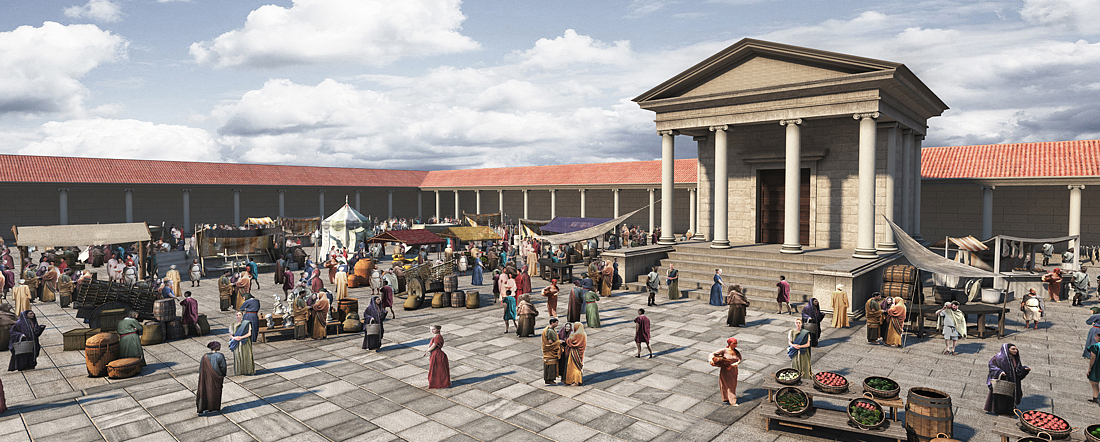
The Forum
The forum acted as a “service centre” at the heart of the commercial, political and religious life of the Roman town and its territory.
The forum was usually located at the intersection of the main cardo and decumanus, or in the immediate vicinity, in order to be easily accessible from every part of the town. The buildings facing the forum were used for various activities and were inspired by those in the Capital.
At Libarna the forum was located in the traditional position, near the intersection of the two main roads. Very little is known of its structure, as it has been the subject of only limited research (1911), which allowed the identification of the area, roughly square in shape and extended approximately by four blocks. The colonnade situated on the southern side might be identified with a basilica, as attested in other cities (Luni, Oderzo). Probably a four-faced arch monumentalised the road intersection at the northern entrance, regulating the vehicular traffic that would bypass the forum complex on the southern side, probably progressing along the eastern minor cardo, which was in fact more accurately paved than other secondary streets. Relevant is the presence of a rectangular foundation, perhaps the basement of a temple, located in the square near the southern colonnade.
An inscription, dating back to the mid-first century AD, informs us that a local benefactor (Caius Atilius Bradua) paved the plaza at his own expense.
At the beginning of the Romanisation process, which took place through the foundation of colonies and the rearrangement of existing settlements into municipalities, the fora (as well as the Roman Forum) hosted the Comitium and the Curia. The Comitium was a venue where the citizens elected their administrative representatives, while the Curia accommodated the meetings of the local Senate. Usually there was also a temple: a Capitolium (inspired by that in Rome which was dedicated to the Capitoline triad: Jupiter, Juno and Minerva), or a place for worship in honour of a deity who was particularly precious to the inhabitants of the colony. From the Julio-Claudian period also a temple dedicated to the imperial worship might have been present. Surely shops (tabernae) were present as well.
As time passed, the need for further services grew in the city, accordingly to what was happening in the Capital, and the basilica was built. This was an enclosed space used to perform various public activities (including the administration of justice) and to temporarily host the commercial activities in the event of bad weather.
From the second century BC straight colonnades lined the square, giving the complex a neat and uniform look.


 Italiano
Italiano Français
Français